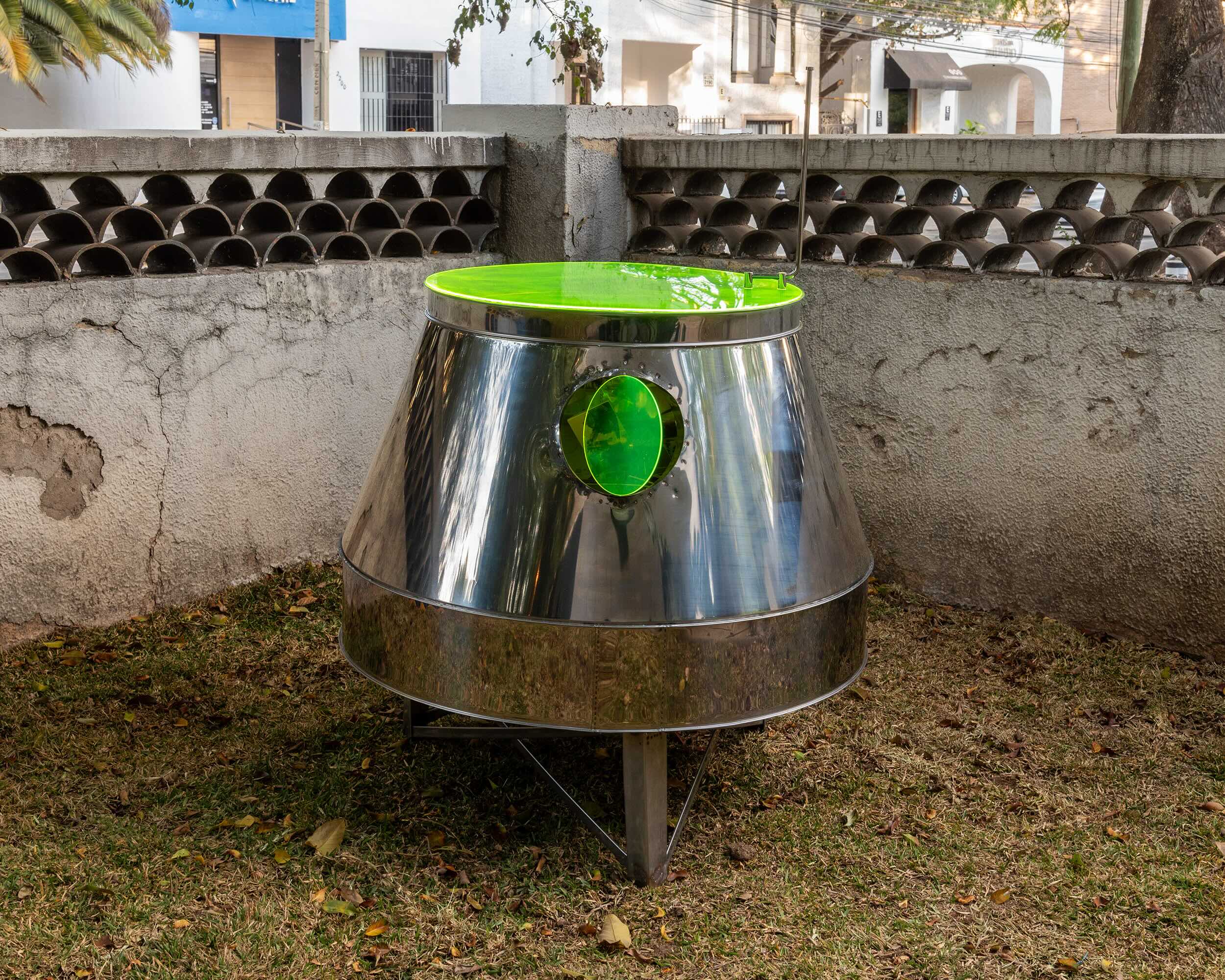
Review
Preludes of a Future in Transit: Romeo Gómez López at Travesía Cuatro
by Diego E. Sánchez
Reading time
3 min
Everything you touch you change. Everything you change changes you. The only lasting truth is change.
—Octavia E. Butler
Over 31 years ago, Octavia E. Butler published The Parable of the Sower, a science fiction novel that imagines a California in flames in the year 2024. The story, divided into two parts—the first published in 1993 and the second in 1998—presents a presidential candidate with extremist ideals whose slogan is "Make America Great Again."
More than a prophecy, the novel was a meticulously researched warning, based on evidence and a rigorous observation of the past and present.
Following a similar line, artist Romeo Gómez López presented his exhibition Life on Mars at Travesía Cuatro, Guadalajara. Like Butler—and in dialogue with her work—he immerses us in a world that seems a natural extension of our own reality: a dystopia not merely born from imagination, but from history and research.
Romeo explores change as an archetype, a constant in our existence. He places his works on Earth, within a spacecraft that never took off, evoking the inevitable need to search for other worlds.
His vision is influenced by dystopian literary works like The Handmaid's Tale by Margaret Atwood and The Parable of the Sower by Butler, revealing the consequences of a system dominated by capitalist greed and the heteropatriarchy. In this context, Romeo emphasizes the limitations of labels that only seek to point out and marginalize minorities. Today, he shows us that more than a "queer" artist, he is an eminent visual artist.
In his work resonates a crucial warning from Butler: the genetic defect of humanity is its tendency toward hierarchy. A predisposition that, if left unchallenged, condemns our evolution to the repetition of oppressive structures.
If change is the only lasting truth, the question is: Will we be able to shape it, or will we continue to be shaped by it?
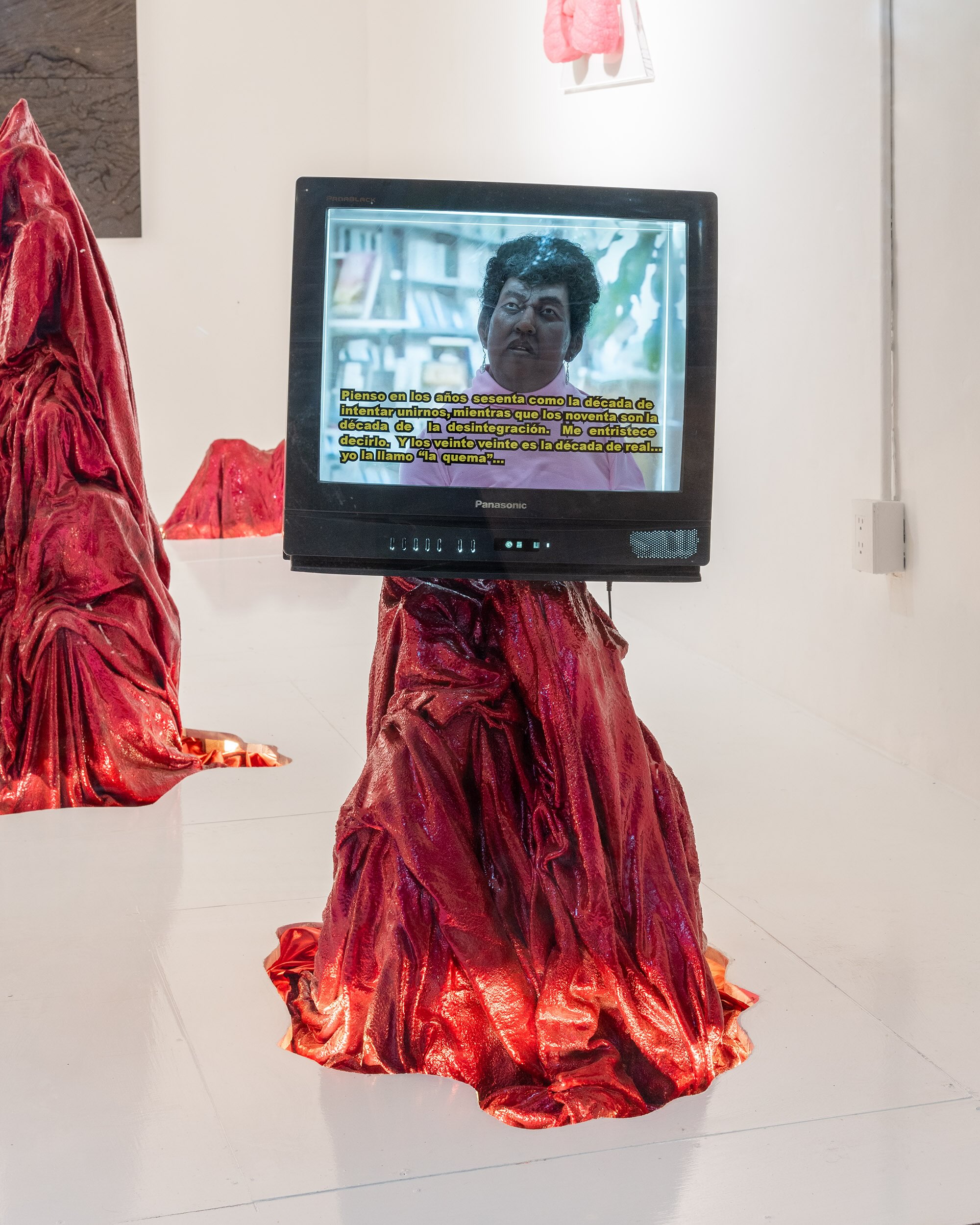
The Parable of the Sower, 2025 Using fabric, resin, automotive paint, LED lights, silicone, a television monitor, and acrylic, this piece references an interview with Octavia E. Butler.
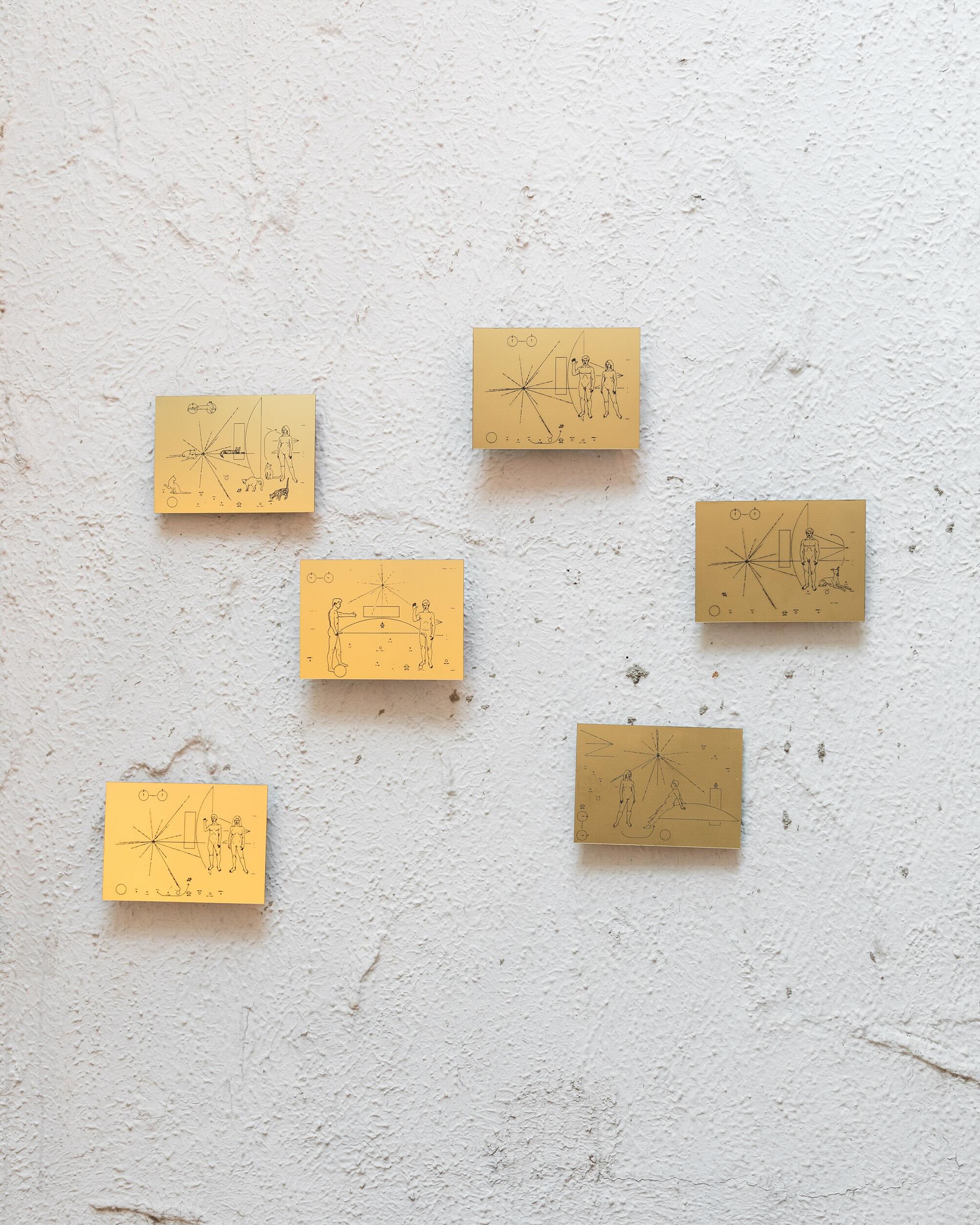
Pioneer Plaque (Perfect Lovers), 2025. This is a series of six engravings on bicolam based on the original plaque sent into space, which depicts a heterosexual couple.
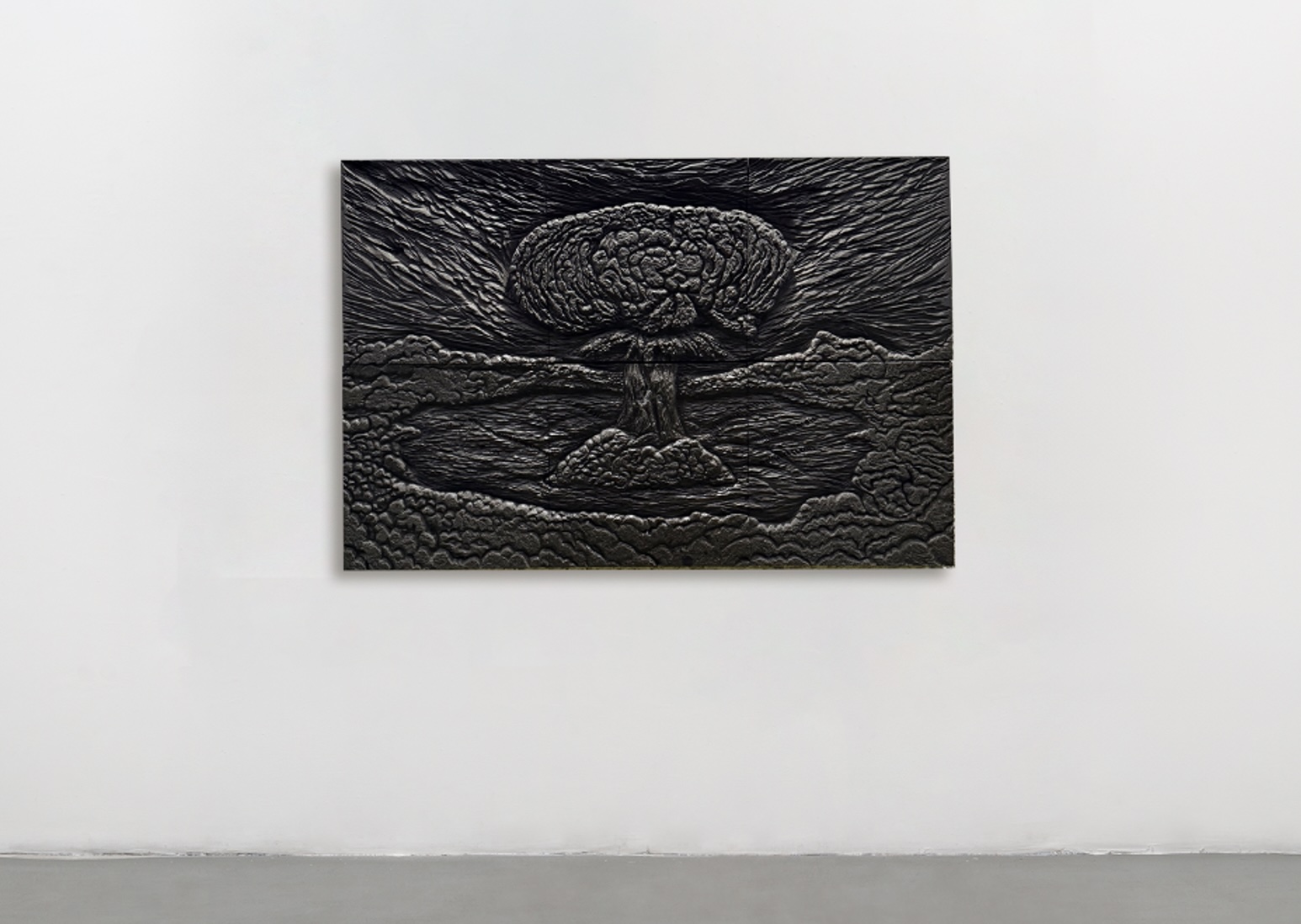
Dawn, 2025. Carving sedimentary rock, this piece references Butler’s novel. It symbolizes the dawn of a new era, post-nuclear war.
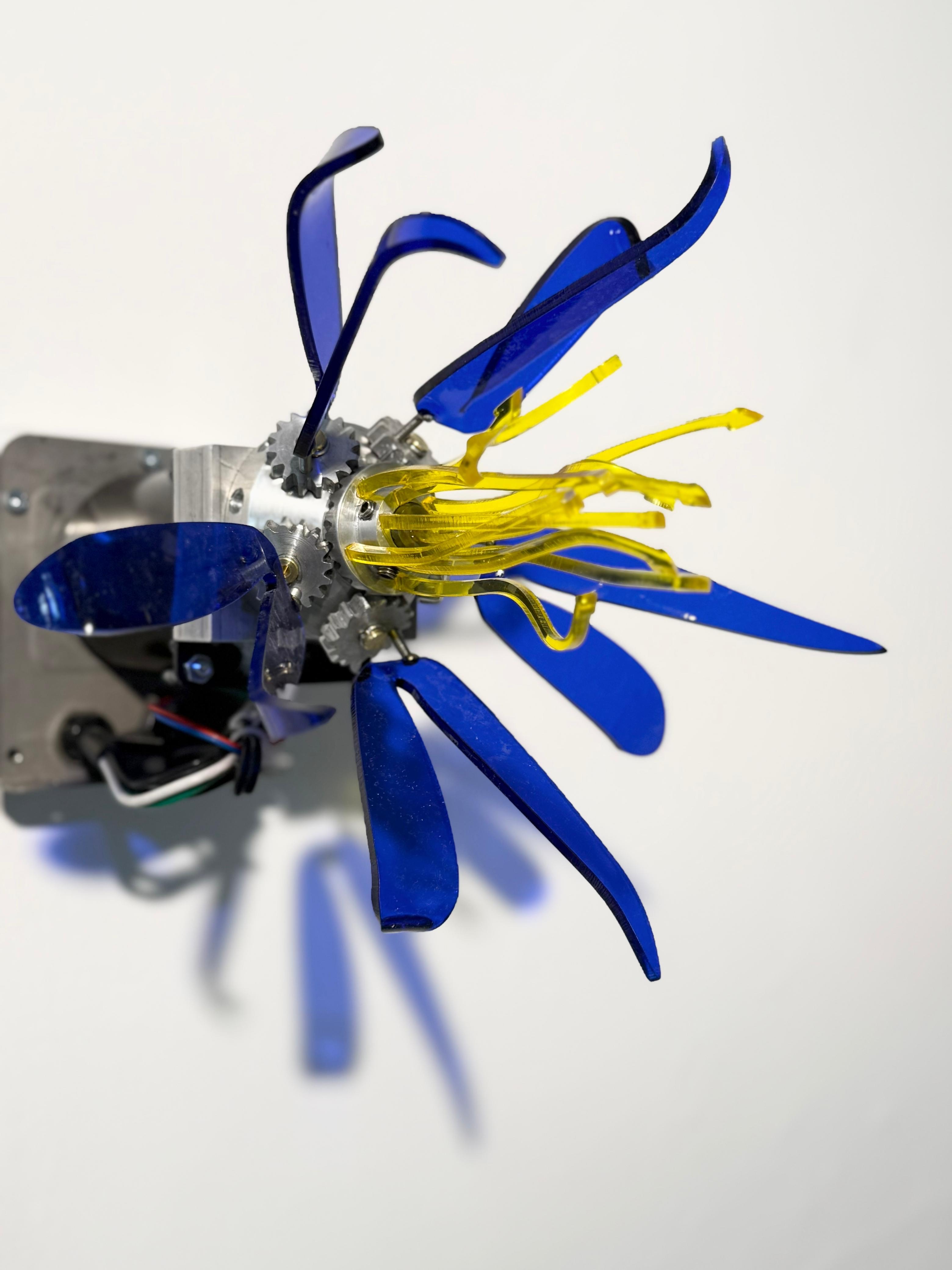
Do Androids Dream? (Acaso sueñan los androides?), 2025. This piece references Philip K. Dick’s novel, where plants and animals were replaced; water and food became luxuries. Now, we are accompanied by a mechanical flower with acrylic petals over metal.
Translated to English by Luis Sokol
Published on February 2 2025